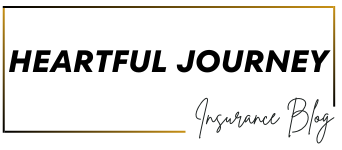Hazard insurance provides homeowners with peace of mind when investing in property, which is typically required by mortgage lenders. It covers their dwelling and other structures like garage from damage caused by sudden perils such as fire or severe storms.

Homeowners looking for extra coverage against flood and earthquake risks can purchase an individual policy with separate deductibles and limits applied. Deductibles apply when filing claims under this type of coverage.
Homeowners Insurance
If you’re purchasing a home, your mortgage company likely requires homeowners insurance as part of its general homeowners policy to protect against damages caused by hazards such as fire and storm. Also referred to as “hazard insurance”, homeowners policies cover damage caused by perils like fire or storm.
Most hazard coverage policies provide open-peril protection, meaning any damages to your home are covered except those specifically excluded from coverage. Your deductible still applies, however. Furthermore, your premium for insurance depends on where you live, how much your home is valued at and which types of coverages are chosen by you.
Insurance provides numerous advantages for homeowners, such as paying to repair damage caused by fires or storms, theft and liability claims – as well as mortgage companies typically requiring you to carry this coverage due to having an insurable interest in your property and suffering losses if it’s destroyed.
Dwelling coverage and extended replacement cost coverage are two other forms of home hazard insurance policies that may apply. Dwelling coverage typically makes up over 90% of your total policy cost and typically protects from roof to foundation as well as including a list of covered perils. Extended replacement cost coverage is especially popular among homeowners living in natural disaster-prone regions as it increases dwelling coverage limit by 20%-50% beyond base policy limits.
Commercial Insurance
Hazard insurance (dwelling coverage) is part of a homeowners policy and usually protects the home’s structure against perils covered in its coverage. Other structure coverage, meanwhile, extends this protection to additional buildings or structures on your property such as sheds, detached garages, fences or more that have been damaged as perils covered under your dwelling policy. In order for an item to qualify as covered under other structure coverage it must have been damaged from covered perils in your dwelling policy.
Not only can hazard insurance protect your home, it also offers personal property coverage. This helps ensure items like computers or jewelry are covered if stolen or lost. Some policies provide replacement coverage up to an amount specified by their policy while others have specific limits set for certain items like computers.
Mortgage lenders require hazard insurance (dwelling coverage) as part of the financing requirements in order to buy a home. The exact coverage amount varies by lender; typically it will reflect the cost of rebuilding it at current market rates. You can also purchase additional coverage, often called an endorsement or rider policy, to protect yourself further.
Maintaining adequate dwelling coverage limits should be an annual task to safeguard against disaster, while purchasing an umbrella policy provides added liability protection.
Auto Insurance
Though this policy doesn’t specifically cover vehicles, it remains an essential element of any small business owner’s portfolio. It protects against unexpected disasters that could cripple their operations, while commercial vehicle coverage will protect against damage incurred when operating them. If your company uses commercial vehicles as part of its daily business operation, consider purchasing additional auto policies to cover potential incidents caused by those vehicles.
Hazard insurance is usually required as part of mortgage agreements as lenders have a vested interest in protecting homes against natural disaster or other catastrophic events. It typically forms part of homeowners insurance policies and covers both the main residence as well as additional structures like garages or sheds on the property.
Hazard insurance provides coverage for at least 16 types of damage or loss; however, some exclusions must be kept in mind. A typical homeowner’s policy doesn’t typically extend coverage to flood and earthquake damages – if your location is vulnerable to these disasters then additional flood and earthquake policies might be beneficial.
Personal property coverage is another exclusion to consider when selecting your homeowners policy, although this coverage may not cover high-value items sufficiently. If you own costly jewelry or collectibles that need protecting against theft or other forms of damage, purchasing separate policies for them could provide added peace of mind.
Business Insurance
Business hazard insurance (also referred to as property insurance) protects both the building your business inhabits and its contents from disaster-related damages, helping to replace income should your operation close due to disaster-related destruction. Typically required by lenders who offer small business loans for operations located in disaster-prone regions.
Hazard and catastrophe insurances differ considerably in scope; catastrophe policies cover larger events with greater impacts. Catastrophe policies tend to offer coverage against certain disasters like earthquakes or flooding separately; if you live in an area prone to such events, additional add-on policies might be necessary for complete protection.
Cost of your hazard insurance depends on various factors, including the size and limits of your deductible and coverage limits. On average, U.S. homeowners insurance with a $500 deductible costs $2,232 annually – to lower that amount you could increase either your deductible amount or raise coverage limits; but bear in mind this will lower premiums but decrease disaster payout amounts should something happen that requires filing an insurance claim.


